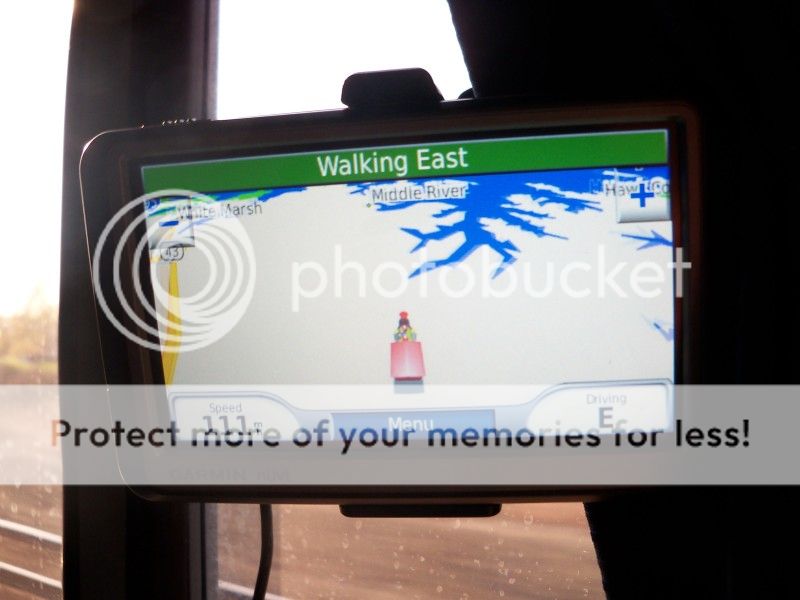Tumbleweed
OBS Chief
Smokin' right along just North of Baltimore this morning on 98....








Yup, I set a pretty fast pace...Wow, you "walk" pretty fast




You should tell them to hurry up and get the new CAF Viewliner baggage-dorms, dinner, and upgraded sleepers so you can increase your walking speed on the NEC to 125 mph! Got to get up a brisk pace for the cardio. :lol:Smokin' right along just North of Baltimore this morning on 98....


Oh no! Sounds awful :giggle:...now I gotta wait for 49 this afternoon for Chicago and catch 7 out of there tomorrow afternoon...
You need to consider all GPS devices have a tolerance of few % so when it shows 111 mph, it is possible the train may physically be moving at 109 or 110 mph. Another thing to consider is that the engineers rely on the speedometer in the locomotive cabin and it is possible its calibration is different from the car GPS we are seeing here so the engineer may be well within his limits as per his speedometer. In today's age where everything is logged, tracked and reviewed, I don't think engineers risk overspeeding even once, forget about "very often".111? I thpought the current limit for NEC LDs was 110. I guess the engineers overspeed very often......
Despite the flaws of GPS, it would be hard to think of engineers as flawless, not exceeding their assigned speed even by 1 mph. Would a engineer get fired if he ran 111 over a 110 zone?You need to consider all GPS devices have a tolerance of few % so when it shows 111 mph, it is possible the train may physically be moving at 109 or 110 mph. Another thing to consider is that the engineers rely on the speedometer in the locomotive cabin and it is possible its calibration is different from the car GPS we are seeing here so the engineer may be well within his limits as per his speedometer. In today's age where everything is logged, tracked and reviewed, I don't think engineers risk overspeeding even once, forget about "very often".111? I thpought the current limit for NEC LDs was 110. I guess the engineers overspeed very often......
I suspect it depends on what the limit is. If it's an FRA-ordered speed limit (i.e. track class speed limits), then not likely (though there may be some very minimal wiggle room in the equipment to account for minor calibration errors and the like), but if it's "just" an equipment limit there might be a bit more room.Despite the flaws of GPS, it would be hard to think of engineers as flawless, not exceeding their assigned speed even by 1 mph. Would a engineer get fired if he ran 111 over a 110 zone?You need to consider all GPS devices have a tolerance of few % so when it shows 111 mph, it is possible the train may physically be moving at 109 or 110 mph. Another thing to consider is that the engineers rely on the speedometer in the locomotive cabin and it is possible its calibration is different from the car GPS we are seeing here so the engineer may be well within his limits as per his speedometer. In today's age where everything is logged, tracked and reviewed, I don't think engineers risk overspeeding even once, forget about "very often".111? I thpought the current limit for NEC LDs was 110. I guess the engineers overspeed very often......
Probably not, but my explanation was in reply to you mentioning "I guess the engineers overspeed very often..". Long story short, engineers don't overspeed on purpose, but it may happen a little bit once in while because of human or machine inaccuracy. No big deal.Despite the flaws of GPS, it would be hard to think of engineers as flawless, not exceeding their assigned speed even by 1 mph. Would a engineer get fired if he ran 111 over a 110 zone?You need to consider all GPS devices have a tolerance of few % so when it shows 111 mph, it is possible the train may physically be moving at 109 or 110 mph. Another thing to consider is that the engineers rely on the speedometer in the locomotive cabin and it is possible its calibration is different from the car GPS we are seeing here so the engineer may be well within his limits as per his speedometer. In today's age where everything is logged, tracked and reviewed, I don't think engineers risk overspeeding even once, forget about "very often".111? I thpought the current limit for NEC LDs was 110. I guess the engineers overspeed very often......
Enter your email address to join: